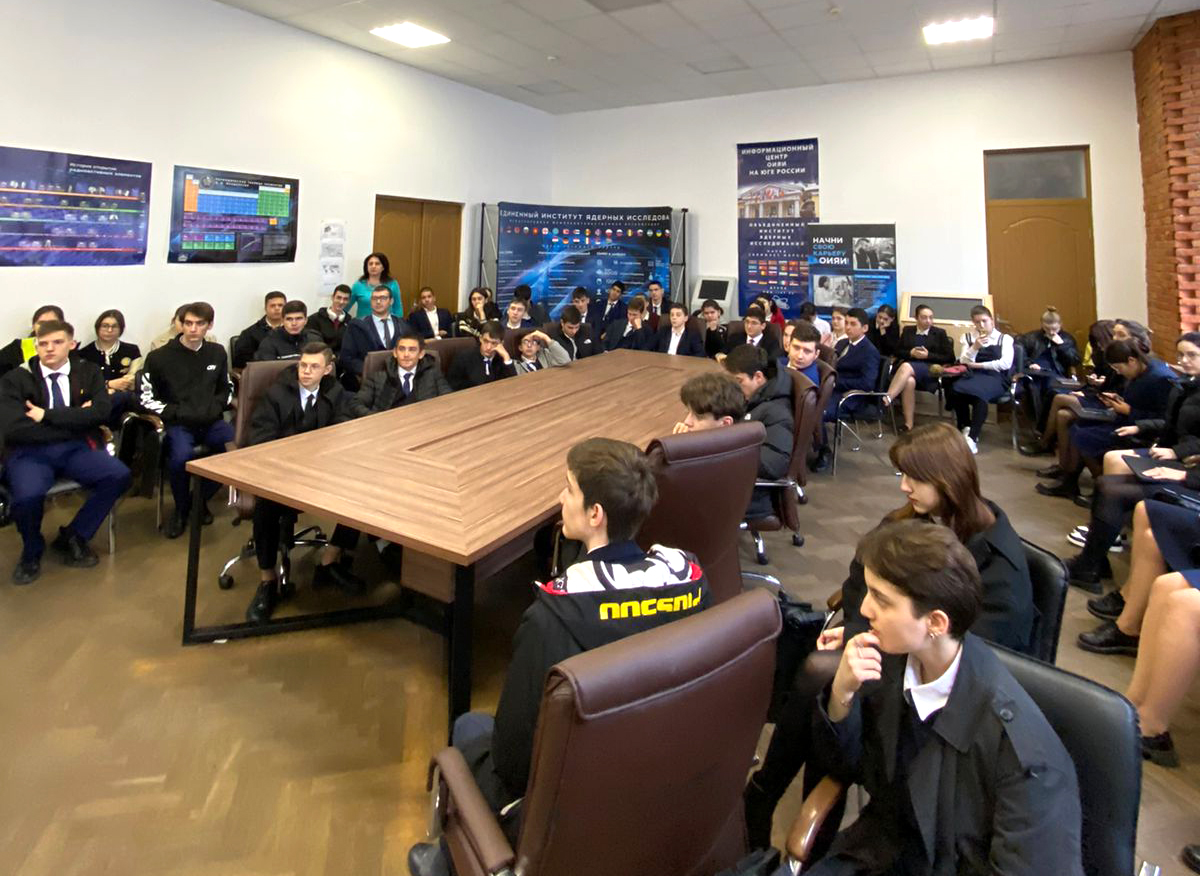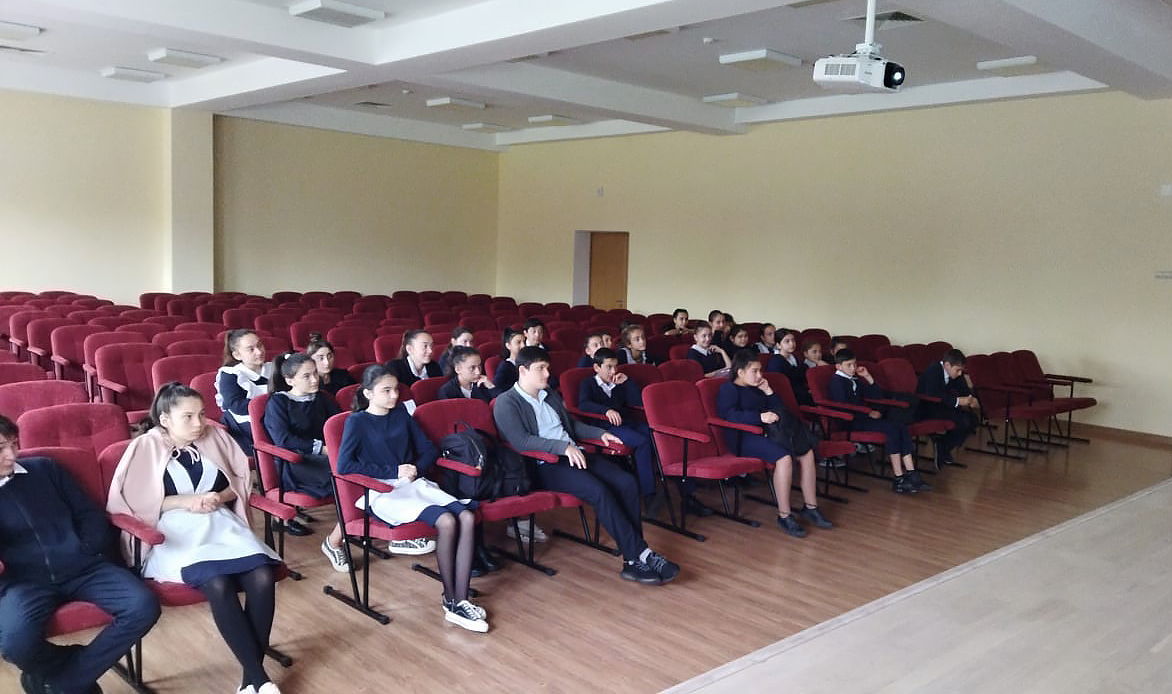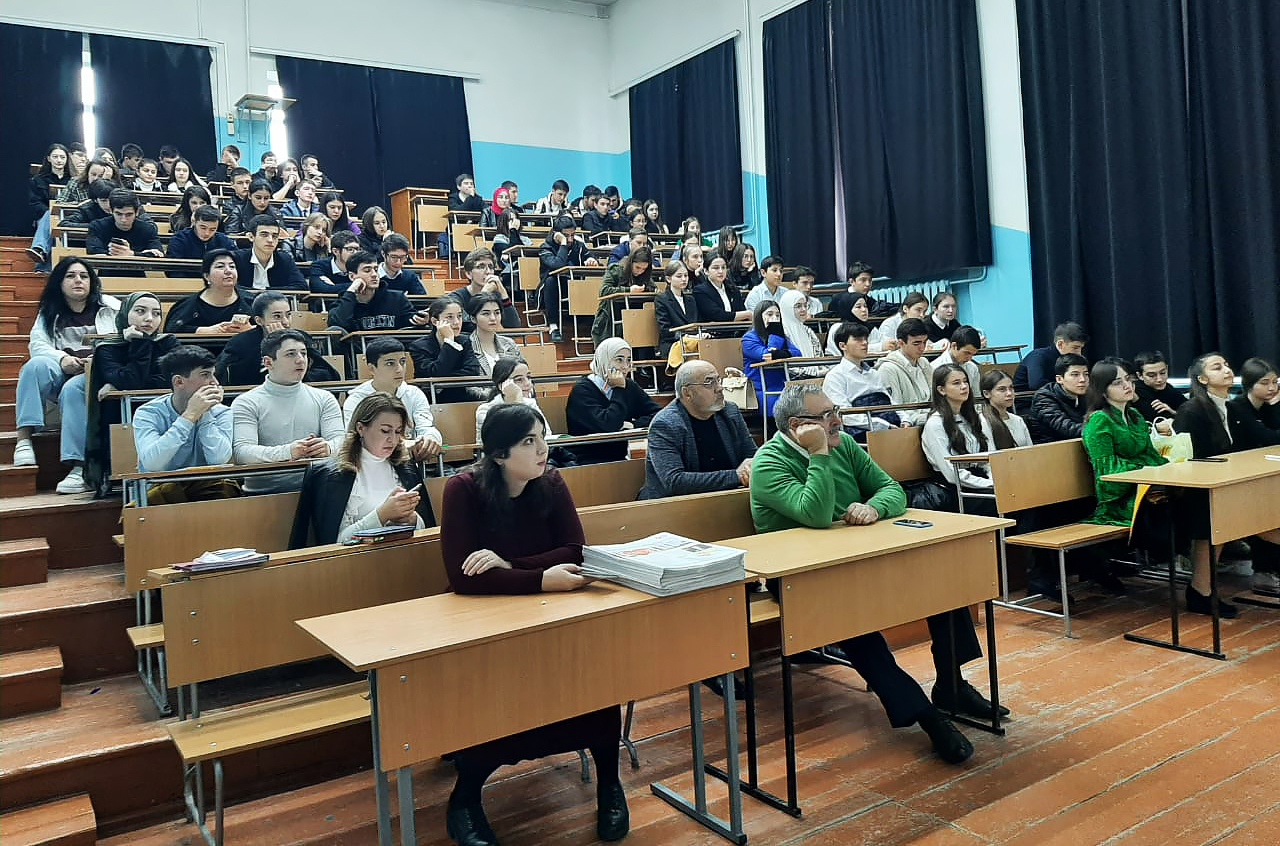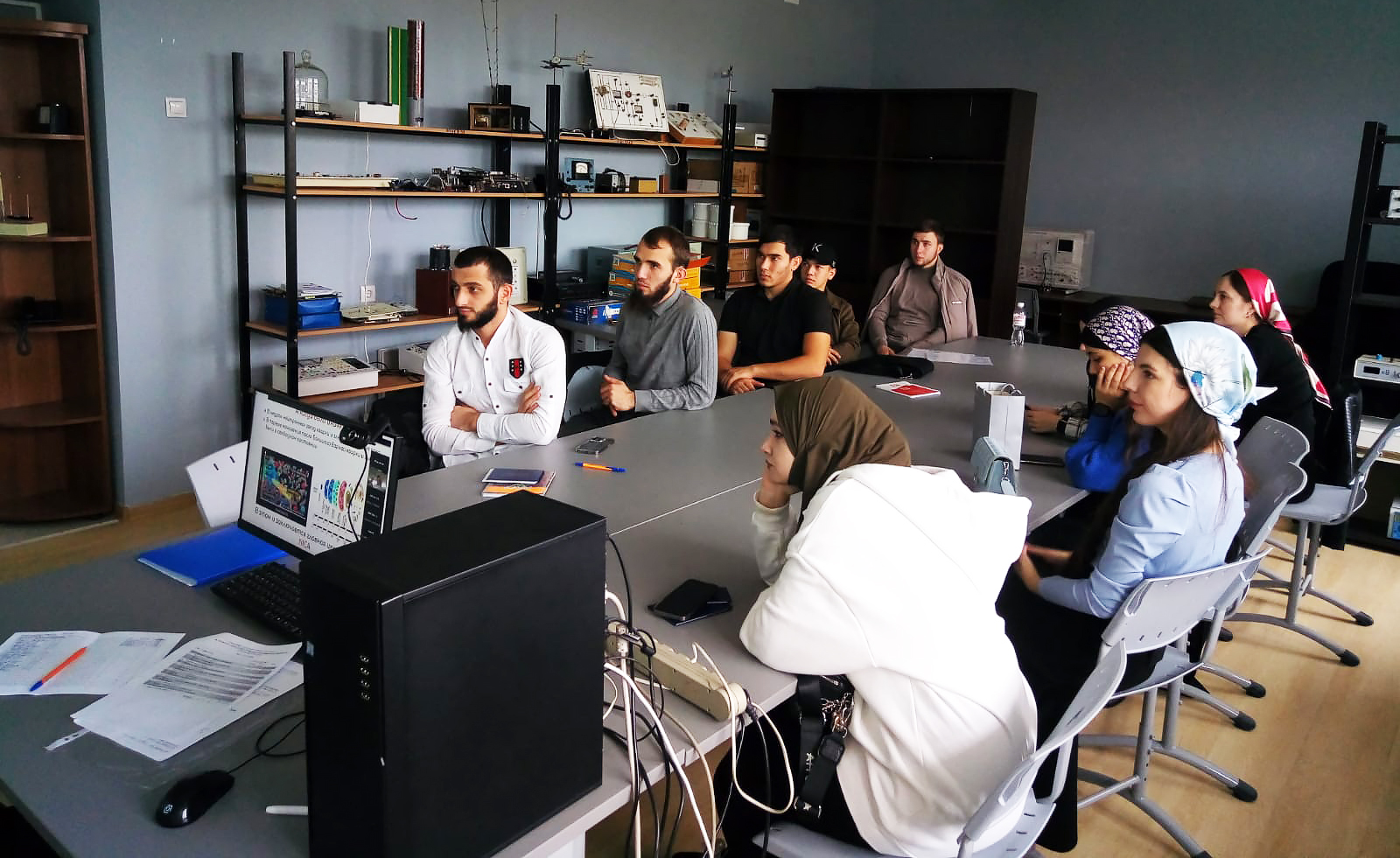Future North Caucasian scientists introduced to NICA Project
Education, 26 October 2022
On 21 October, more than 300 school children and students from Vladikavkaz, Nalchik, Stavropol, Maykop, and Grozny joined an online broadcast from JINR to learn about the NICA Megascience Project and figure out its aim. The coordinator and one of the largest sites for the broadcast was the JINR Information Centre in the South of Russia based at the North Ossetian State University. Acquaintance of participants with the Institute’s flagship project included an overview video about the NICA Accelerator Complex, as well as an online tour of the Laboratory of High Energy Physics JINR.
The programme of the first in the series live broadcast with the regions through the JINR Infocentre in Vladikavkaz was rich. From an online lecture “NICA: Back to the Future” by VBLHEP senior researcher Sergei Merts, students learned what particle accelerators and magnifying glasses have in common, how accelerators help people not engaged in science. The lecturer explained why NICA is a special collider and what is its advantage compared to other charged particle accelerators. School children also got the answer to the main question of the lecture about the way NICA may help us look into the past.
Participants of the broadcast walked together with VBLHEP JINR Leading Engineer Alexander Tikhomirov around the factory of superconducting magnets in a real-time mode. The guide told them how to conduct an ultra-high current through magnets and why magnets are cooled down to the temperature of outer space although they work at laboratories on Earth.
Participants saw the Booster and the Nuclotron Accelerators, which are currently unavailable due to the commissioning run, in a broadcast of an excursion record with VBLHEP engineer-programmer Nikita Sidorov. The speaker told students about the aim of the NICA Project, why it is necessary to reproduce the moment of the birth of our Universe in a laboratory. School children learned how fundamental studies at megascience facilities change our life, to which fields they may bring benefit.
Introduction to the JINR flagship scientific project in the format of the online broadcast aroused vivid interest among young listeners. Students asked the JINR scientists numerous diverse questions during the broadcast.
Director of the JINR Information Centre in the South of Russia Nelli Pukhaeva summed up the results of the webinar, “Participants were keen to learn about such a large-scale project as NICA. NOSU has been working with school children for a long time already, but a series of science popular webinars is organized for the first time. Such a format has attracted universities of the region, because it is a great example of career guidance work with school children. The quality of lectures was very high.”
Commenting on the event, Head of the International Cooperation Department of JINR Dmitry Kamanin added, “JINR possesses a wonderful modern scientific infrastructure, conducts fascinating research, has a rich history. All that may and should be used to popularise science. All the more because we have employees able to speak about it in an engaging way, who work with school children, students, and school teachers with pleasure. One of the most important tasks of our Information Centres is to form a wide audience for our in-person meetings and especially online work. It is not an easy task but it may allow us to work with a large audience. We congratulate our colleagues in the North Caucasus on a wonderful undertaking!”
 At webinar in JINR Infocentre at NOSU
At webinar in JINR Infocentre at NOSU


